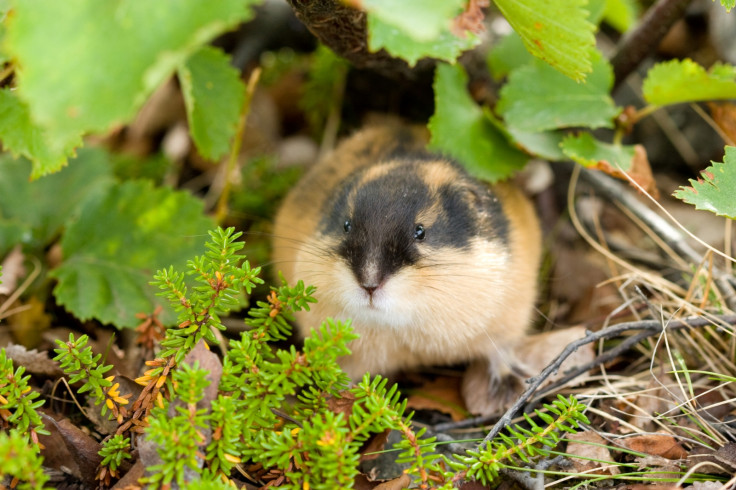Angry Norwegian lemmings are the bravest of them all
The angry Norwegian lemming is one of the bravest rodents in the world because it has evolved aposematic traits to ward off predators, a study has suggested.
Norwegian lemmings have an interesting reputation, with people often mistakenly believing they are "crazed creatures" that commit suicide by throwing themselves off cliffs, or exploding because they are so angry.
They have bold colouring – with a red-brown back, yellow flanks, a white chest, chin and cheeks, and a big black patch on its head – and so stand out from their less vibrant relatives.
While most other small rodents flee when they sense a threat and only very rarely aggressively protect themselves from predators, the Norwegian lemming laughs in the face of danger.
When predators approach, they make loud, severe barks, and fight back against attacks with lunges, bites and screams. In a BBC report about their behaviour last year, one group of researchers even reported a face off with a farm tractor, "leaving a trail of infuriated lemmings behind".
Aposematism vs cryptic evolution

Malte Andersson, from the University of Göteborg in Sweden, studied the Norwegian lemming over five field tests comparing their behaviour to other, similar rodent neighbours.
His study, published in the Springer journal Behavioural Ecology and Sociobiology, suggested the Norwegian lemming's remarkable behaviour can be ascribed to aposematism – the use of warning colours and other means to tell potential predators they themselves are dangerous too.
Aposematism is unusual among herbivorous mammals – normally it is seen in insects, snakes and frogs. Cryptic evolution is an adaptive evolutionary change masked by concurrent environmental change.
In one of his experiments, however, Andersson found that brown lemmings issued an anti-predatory warning call when a human was near in one in 39 cases (2.5%). In comparison, the Norwegian lemming told humans to back off in 36 of 110 cases (32%). Another test showed the Norwegian lemming is far easier to spot, suggesting greater confidence.
Most of the Norwegian lemmings would have a fight response when the human was five metres away, but would flee when the 'predator' was at a distance of at least 10m.
Andersson notes that black and white colouring is a classic warning colouration, with some birds instinctively knowing to avoid creatures with such colours. "The Norwegian lemming combines acoustics with visual conspicuousness, probably to reduce its risk of becoming prey," he said.
He concluded: "The tests corroborate the hypotheses that distinctive, contrast-rich colouration, antipredator calls and threat postures of the Norwegian lemming form a multimodal suit of aposematic traits, warning predators that this is a more dangerous prey than the smaller sympatric voles, and discriminability from undefended species is an important adaptive reason for conspicuous distinctness of many aposematic signals."
Exploding suicidal Norwegian lemmings
The myth that Norwegian lemmings kill themselves by mindlessly throwing themselves off cliffs is not true. It arose because of population booms followed by lots of dead lemmings being found, and was perpetuated by Walt Disney.
In White Wilderness, a sequence shows lemmings reaching the edge of a cliff, the voiceover says "this is the last chance to turn back, yet over they go, casting themselves bodily out into space". It is also worth noting the lemmings used in the film were brown rather than Norwegian.
The footage was faked, with producers paying $1 per lemming, which were then tipped from a truck off the cliff.
In reality, the dramatic population cycles from high to low have perpetuated the myth. Instead, population booms lead to mass migration. When this happens, they move from higher to lower ground to find more food. In doing so, sometimes they end up falling down cliffs.
Also, they do not explode. After population booms, predators have a field day feasting on Norwegian lemmings. So strewn body parts are not the result of them literally bursting with anger – it is the result of a mass slaughter.
Speaking to the BBC, Nils Christian Stenseth of the University of Olso in Norway, also points out: "No one has seen a lemming explode."
© Copyright IBTimes 2025. All rights reserved.






















